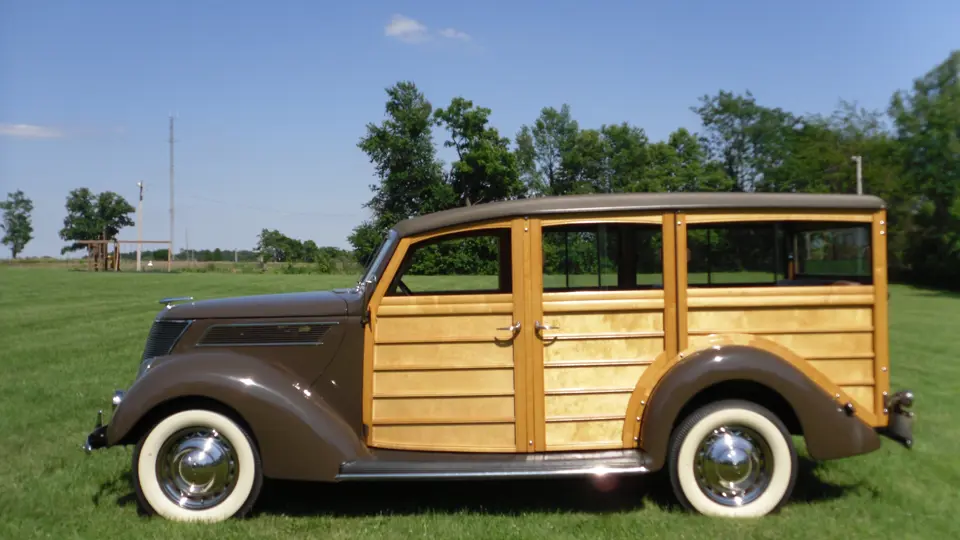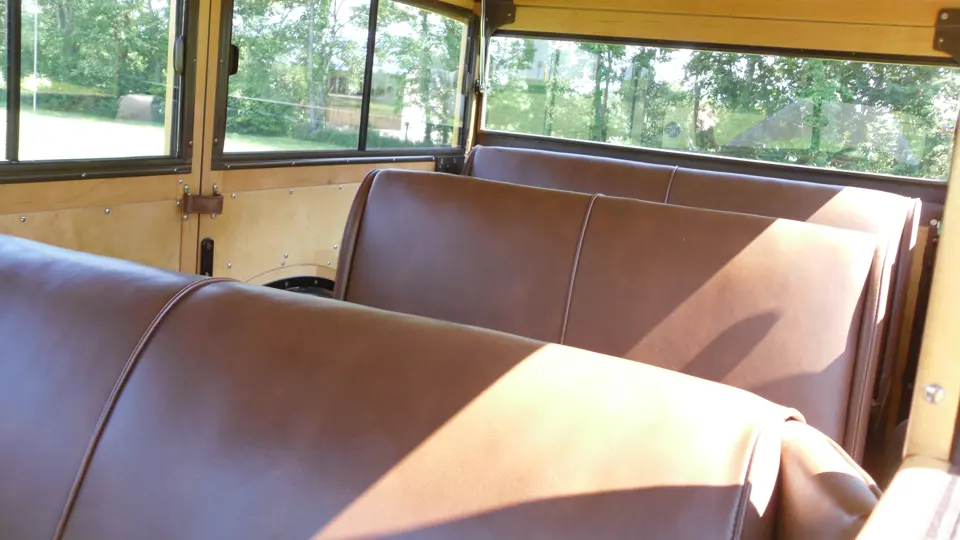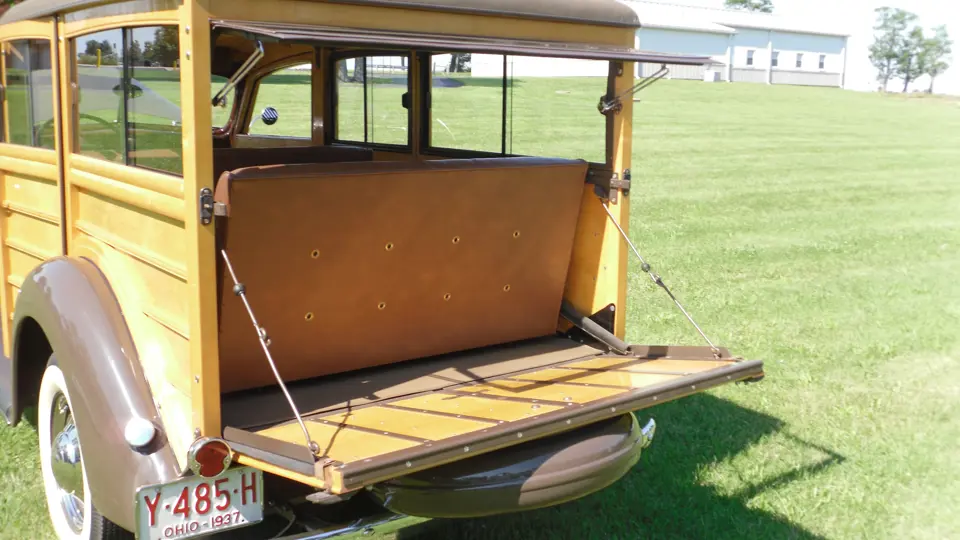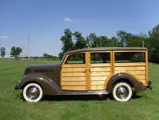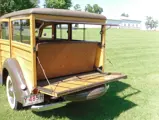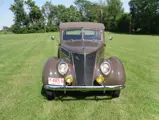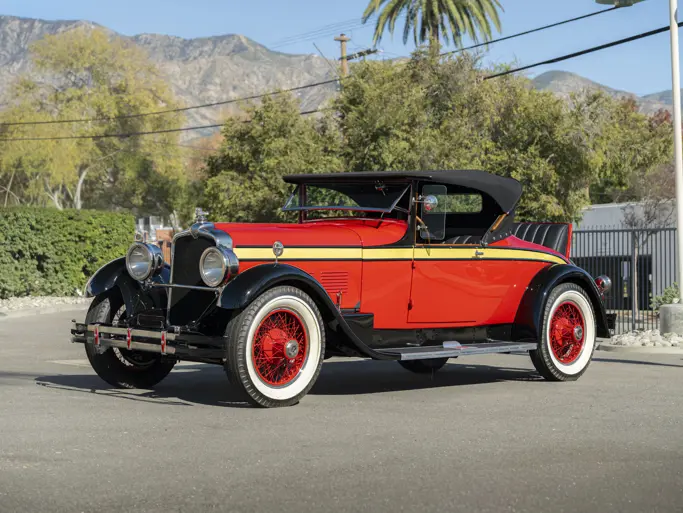Model 78. 85 bhp, 221 cu. in. L-head V8 engine, three-speed manual transmission, solid front axle and live rear axle with transverse semi-elliptic leaf springs, four-wheel mechanical drum brakes. Wheelbase: 112"
- A delightful woodie, equipped with the Deluxe Accessory Group
- An early example finished in Autumn Brown
Although late to market with a factory station wagon (Durant Motors Star being the first in 1923), Ford literally commanded that segment of the industry since it first entered in 1929. Sales of nearly 142,000 wood-bodied wagons through 1948 easily established the company as the nation’s wagonmaster.
The new Lincoln-Zephyr had a huge influence on the 1937 Fords. The pointed prow, penned by designer E.T. “Bob” Gregorie, was a direct takeoff, as were the teardrop-shaped headlights recessed into the fenders. The first Ford with an “alligator” hood, it was also novel in placing the battery in the engine compartment.
The V8 engine was revised for better cooling, placing the water pumps at the bottom and moving the water outlets to the middle of the cylinder heads. This configuration would endure for more than a decade. The rod-operated mechanical brakes gave way to a cable arrangement.
Station wagons received some updates of their own. A bench replaced the individual seats in the second row, located to the left so that passengers could easily access the third seat via the right side. For the first time there was a glass-windowed liftgate at the rear. The Deluxe Accessory Group had become so popular that a separate series of body numbers, signified by “B,” was adopted.
This car’s body number dates from March 1937, and the “B” denotes the Deluxe Accessory Group with which it is equipped. As an older restoration it is correctly done with many new old stock parts. The car shows well with excellent wood and varnish. Additional equipment includes a factory radio, the coveted spider wheel trim, Unity fog lamps and double whitewall tires. Painted correct Autumn Brown, it has the three-seat interior in artificial leather.
Ford wagon sales grew steadily into the 1940s, and additional features were added. Many collectors, however, regard the early models as perhaps the purest of the series. This car is an excellent example of that elegant simplicity.




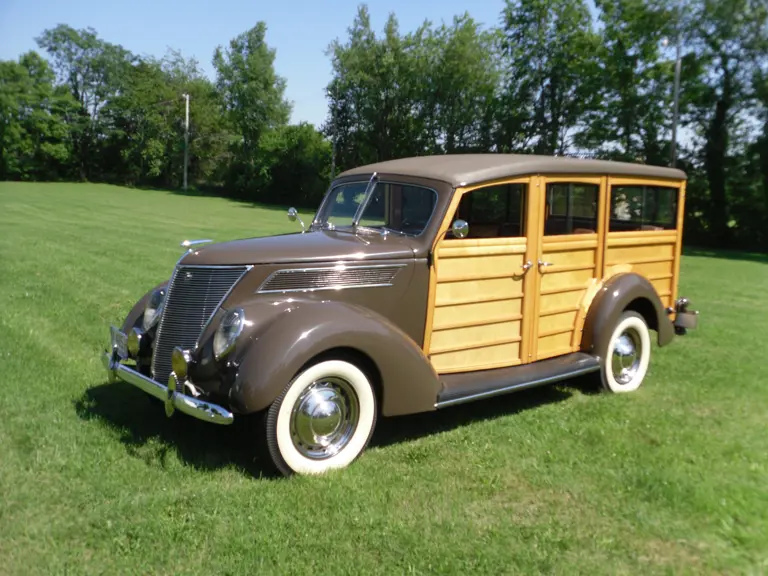
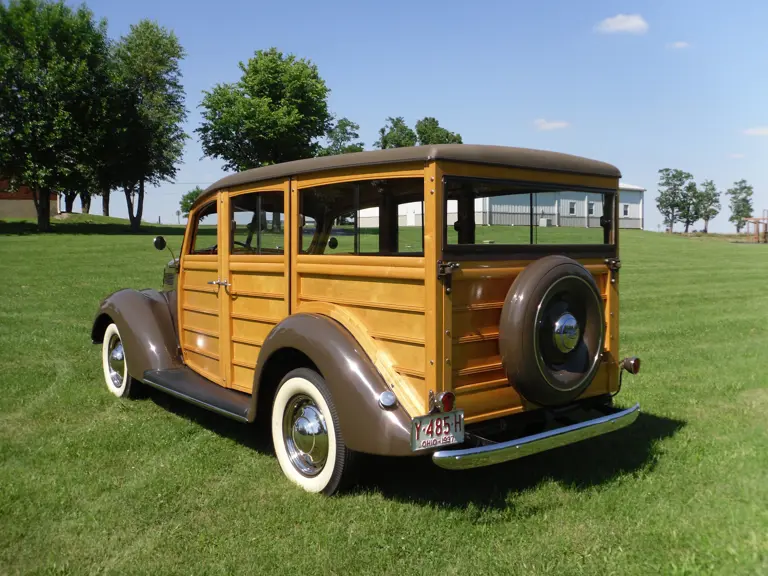
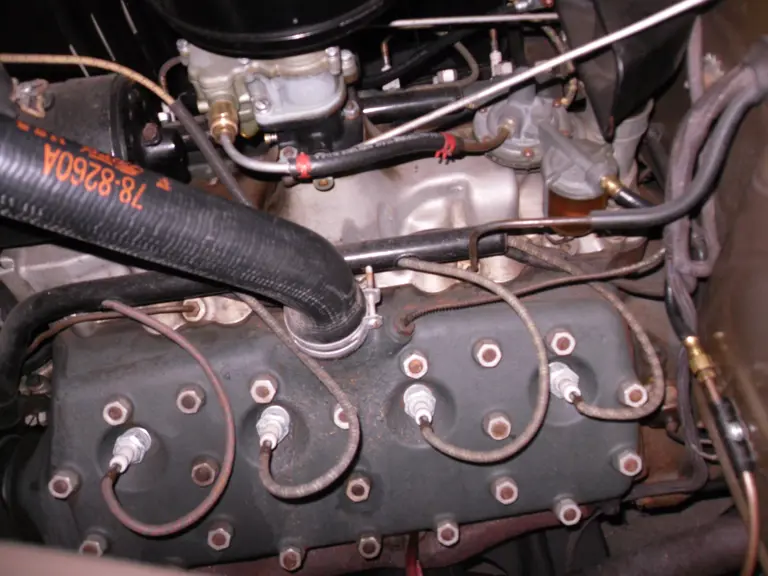
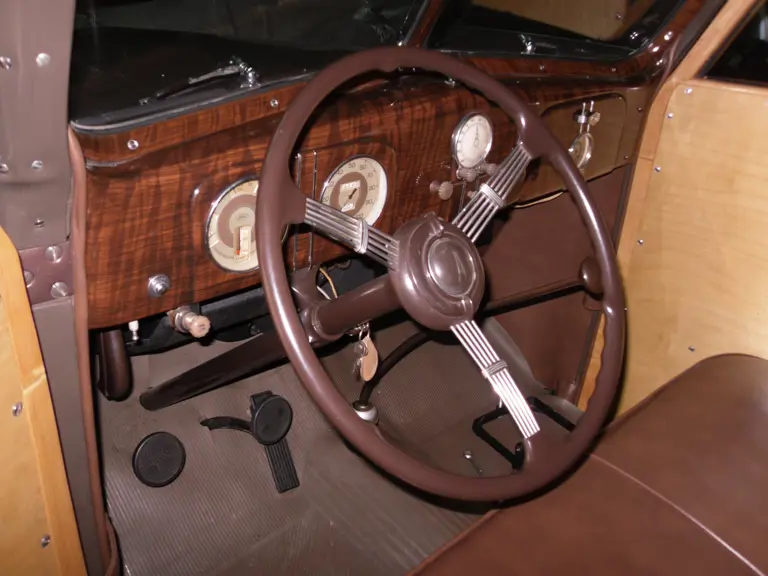
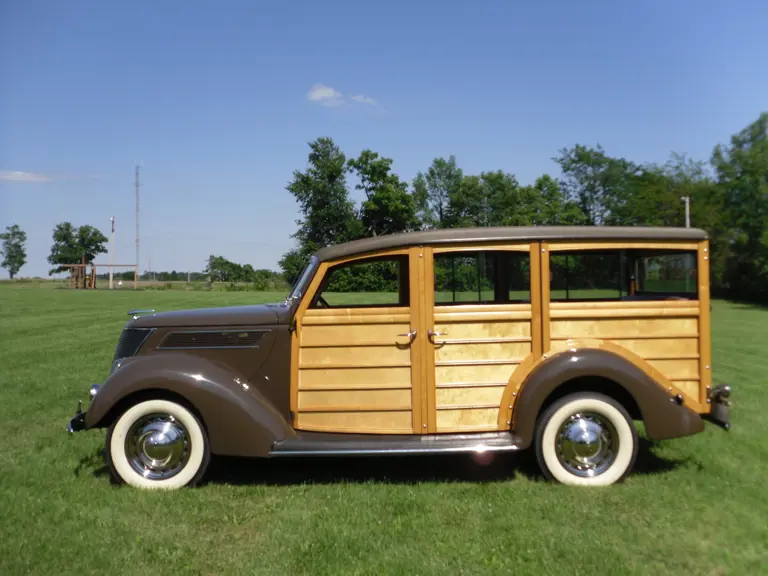

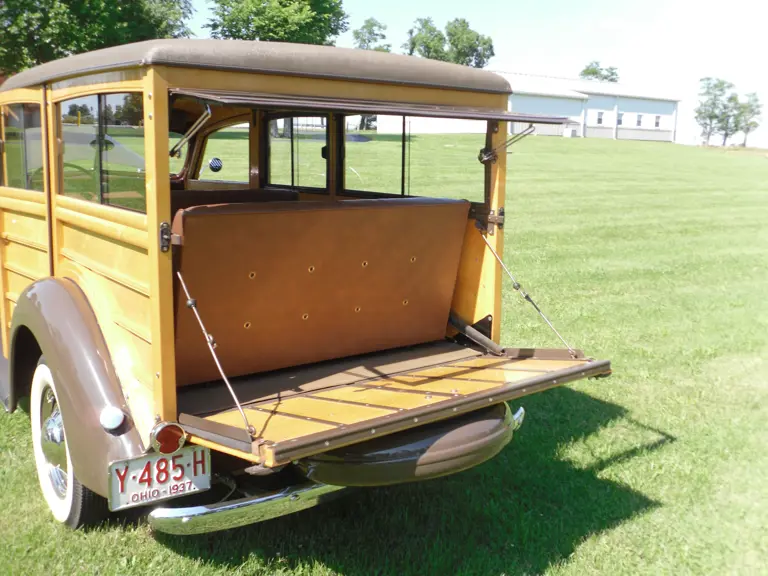
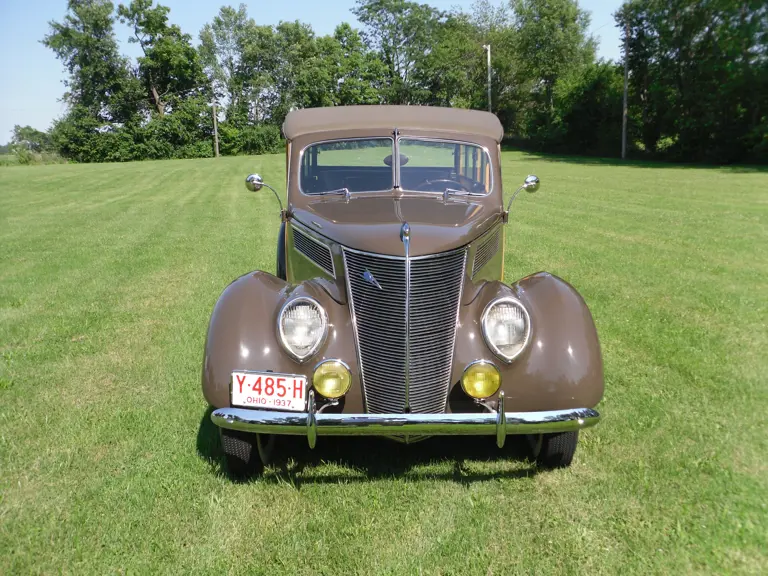
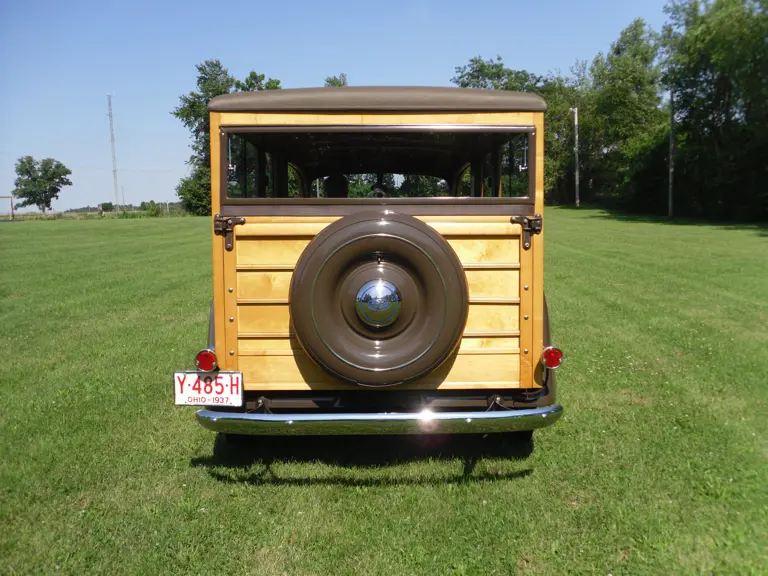

 | Hershey, Pennsylvania
| Hershey, Pennsylvania
